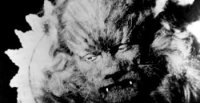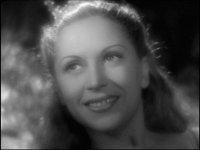Is It Really a Great Movie? Part Two: Beauty and the Beast (La Belle et la bęte)
by dan heaton

Using Roger Ebert's Great Movies book as a guide, this series of articles will focus on all films included on his list that previously have escaped my notice. Since all lists are subjective, I am not treating Ebert's choices as the essential selection of films. However, his essays offer the perfect chance for me to explore both classics and lesser-known pictures from around the globe.
Not nearly as well known as its Great Movie counterparts and the Oscar-nominated 1991 animated Disney film, Jean Cocteau's Beauty and the Beast has been recognized by numerous experts as a masterpiece. Its score on Rotten Tomatoes is 95%, with critics like Time Out New York's Mike D'Angelo labeling it as a "magnificent fairy tale." Viewer ratings on the Internet Movie Database have also placed it as #165 on the top 250 films of all time. In 1946, this French picture was awarded the renowned Prix Louis Delluc by a jury of film critics and professionals.
My knowledge of the fairly tale prior to this viewing was limited to seeing the Disney film as a teenager and vaguely recalling the late '80s television series starring Linda Hamilton and Ron Perlman. In this film, while teapots don't break out into song, there are basic similarities between it and the animated musical. Both follow the same general storyline about a kind-hearted, beautiful young woman who learns to love a beastly figure living in a magical castle. The primary difference occurs with the tone, which obviously must be lighter for the Disney audience. It is difficult to convey a dreary sense of foreboding when the characters perform exciting dance numbers. Even the happier moments of Cocteau's version occur in odd settings that undermine the possible joy. The Beast also displays a brutal side here that is also hinted at in the animated version.

Although it was produced 60 years ago, Beauty and the Beast utilizes effective, creepy images that don't appear dated in any way. The Beast's home features surreal touches like disembodied arms holding up lights and even pouring drinks for guests. It also contains a strange mirror that presents both magical and horrifying images, depending on the participant. The film begins with a scrolling message from Cocteau asking the audience to give in to the story's fairy-tale aspects with a childlike attitude. While this request seems a bit hokey, it does remove the need for screen time devoted to introducing the supernatural environment. The Beast's makeup probably won't scare modern audiences, but actor Jean Marais sells the character's angst well enough to make you forget about the obvious facial makeup. Another impressive distraction is the stunning backdrops, which help to build a world more believable than much of today's computer-generated worlds.
The story begins at the home of a struggling businessman (Marcel Andre), the father of three daughters – Felicie (Mila Parely), Adelaide (Nane Germon), and Belle (Josette Day). The first two sisters are wealth-obsessed fiends who torment everyone with their nasty ways, while the attractive Belle waits on them and cleans the house. In hopes of resurrecting his business, the father takes a long journey that brings him into a hazy, confusing forest. Arriving at the Beast's castle, a well-meaning act leads to his death sentence unless one of his daughters will take his place. The kind-hearted Belle volunteers to save her dad, but is stunned when she encounters the rough Beast. As time passes, he begins to win his way into her heart, but the selfish actions of the sisters, her brother Ludovic, and a past suitor may bring an end to their growing relationship. The film concludes with a tense, possibly deadly moment and a confusing revelation. While the resolution may not be entirely understandable or satisfying, the striking final shot will remain inside your mind for a long time.
Roger Ebert describes Beauty and the Beast as "one of the most magical of all films," and it is difficult for me to disagree with this statement. Belle's experiences at the Beast's castle differ consistently from expectations and showcase Cocteau's mastery of the often surreal imagery. During one enchanting, creepy scene, Belle glides down a passageway, apparently light enough to avoid the encumbrance of footsteps. During his worst moments, steam rises from the Beast's fingers and creates an aura of animalistic menace. These extra touches lift the story above the standard fairy tale and help to explain its great longevity. The only downside to this film are Belle's sisters and suitor (also played by Marais), who come off as caricatures and slow down the pace considerably. Once we leave their world, the film takes off and ventures into compelling territory. Even considering the minor flaws, Beauty and the Beast deserves its place as a great movie and should continue to charm new generations of film lovers as they explore cinema's past.
Note: This essay describes Beauty and the Beast with its original audio. The Criterion DVD release also includes a separate opera soundtrack created by composer Phillip Glass, but I chose not to discuss that version in the article.
Copyright (c) 2006 erasing clouds |
|